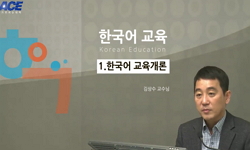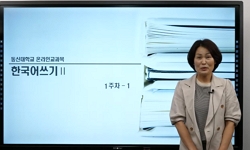A Study of the Interaction between Grammatical and Lexical Aspects of Past Tense Verbs in L2 Spanish by Korean Speakers 스페인어의 상 습득에 대한 연구는 상당히 많이 진행되어 왔다. 그간의 연구는 제1 언어로서의...
http://chineseinput.net/에서 pinyin(병음)방식으로 중국어를 변환할 수 있습니다.
변환된 중국어를 복사하여 사용하시면 됩니다.
- 中文 을 입력하시려면 zhongwen을 입력하시고 space를누르시면됩니다.
- 北京 을 입력하시려면 beijing을 입력하시고 space를 누르시면 됩니다.
(A) study of the interaction between grammatical and lexical aspects of past tense verbs in L2 Spanish by Korean speakers
한글로보기https://www.riss.kr/link?id=T13994587
- 저자
-
발행사항
서울 : Hankuk University of Foreign Studies. Graduate School, 2016
-
학위논문사항
학위논문(석사) -- Hankuk University of Foreign Studies. Graduate School , 언어인지과학과 , 2016. 2
-
발행연도
2016
-
작성언어
영어
- 주제어
-
DDC
410 판사항(22)
-
발행국(도시)
서울
-
형태사항
xiv, 145 p. : 삽도 ; 26 cm.
-
일반주기명
한국외대 논문은 저작권에 의해 보호받습니다.
지도교수: Jun Jong Sup
참고문헌 : p.117-131 - 소장기관
-
0
상세조회 -
0
다운로드
부가정보
다국어 초록 (Multilingual Abstract)
A Study of the Interaction between Grammatical and Lexical Aspects of Past Tense Verbs in L2 Spanish by Korean Speakers
스페인어의 상 습득에 대한 연구는 상당히 많이 진행되어 왔다. 그간의 연구는 제1 언어로서의 스페인어의 상 습득과 관련된 연구, 제2 언어로서의 스페인어의 시제-상 형태 습득에 관련된 연구, 그리고 다양한 언어로부터의 상의 전이 양상에 대한 연구가 그것이다. 이러한 선행 연구가 가지는 공통적인 문제점은 (가) 클로즈 테스트(cloze tests)와 같은 오프라인 생산(offline production)과 추출 과제(elicitation tasks)에 초점을 두고 있다는 것, (나) 전형적으로 유사한 언어, 즉 로망스어 계통의 언어(프랑스어, 이탈리아어, 포르투갈어)나 영어, 독일어만을 대상으로 연구하였다는 것이다.
본고의 목적은 이러한 문제점을 해결하기 위해서 유형론적으로 다른 언어로 분류되는 한국어와 스페인어에 대해 연구할 것이다. 즉, 한국어 모국어 화자에 의한 스페인어 시제-상 형태의 습득에 관한 연구이다. 특히 본 연구는 외국어로서 스페인어를 배우고 있는, 한국어를 모국어로 하는 성인 학습자를 대상으로
과거 시제 표지의 사용과 스페인어 과거 시제인 부정과거(Preterite)와 불완료과거(Imperfect)에서 동사의 어휘상의 과거 시제 표지의 사용의 상관관계에 초점을 맞추었다.
본고에서 실시한 두 가지의 심리언어학 실험은 온라인 자기 조절 읽기 패러다임(online self-paced reading paradigm)(비누적 선형 형식, non-cumulative linear format)에서 다양한 변수를 검증하기 위해서 설계되었다. 실험은 (가) 동사(주요 단어-V), (나) 동사 뒤의 단어(V+1), (다) 문장 마지막 단어(SF)의 세 단어 범위의 과거 시제 문장과 미완료 시제 문장으로 모든 참가자로부터 읽기 속도를 측정하여 자료를 수집하였다. 본 실험의 피험자는 모두 24명이다. 실험군은 한국외국어대학교에서 스페인어를 전공하는 학부생 14명이고, 통제군은 스페인어만을 단일 언어로 구사하는 칠레인 10명이다. 실험은 다음의 네 가지 이론에 기반하는데, 상 가설(the Aspect Hypothesis, Andersen & Shirai, 1996; Bardovi-Harling, 1995), 원형 가설(the Prototype Hypothesis, Shirai, 2002; Li & Shirai, 2000), 제1 언어에서 제2 언어로의 전이(transfer from L1 to L2, Cenoz, 2001; Cenoz & Genesee, 1998; Kellermans, 1983), 기본 과거형 가설(the Default Past Tense Marker Hypothesis, Salaberry, 2008, 2000; Salaberry & Ayoun, 2005; Shirai, 2004)이 그것이다.
실험 1은 시상 형태의 오류에 대한 참가자들의 인식을 검증하였다. 그 결과 실험군과 통제군의 두 그룹 모두가 부정과거와 불완료과거 시제의 오류에 민감한 것으로 나타난다. 실험 2는 참가자들의 제1 언어가 제2 언어에 시상 원형을 형성하는데 영향을 미치는지에 대해 검증하였다. 그 결과 시상 범주(부정과거와 불완료과거)는 동사의 어휘상 부류와 반응 시간이 관련성을 가지지 않았다. 그러나 반응 시간은 실험군과 통제군에서 다르게 나타났는데, 이것은 제1 언어와 제2 언어 사이의 원형적 연상의 전이에 기인한 것으로 보인다. 한국어 화자들에게서 활동 동사(activity verbs)는 두 언어의 상 체계에서 동사의 특징의 유사성에 기인하여 긍정적 전이를 촉진시켰다. 상태 동사(state verbs)와 성취 동사(achievement verbs)는 부정과거와 불완료과거와의 상호작용과 이러한 동사의 특징의 차이점에 기인하여 간섭(부정적 전이)이 야기된다.
두 실험에서 가장 중요한 발견은 한국어 모국어 화자와 스페인어 모국어 화자는 모국어에서 시제와 상의 차이에 기인하여 서로 다르게 행동한다는 것이다. 아울러 본 실험의 결과는 상 가설과 원형 가설의 모순을 보여 준다. 마지막으로 본 연구의 결과는 Salaberry’s(2001)의 기본 과거형 가설을 뒷받침한다. 제1 언어가 제2 언어의 시상 습득에 미치는 영향 관계는 보고된 온라인 효과를 확인하기 위한 더욱 정교한 실험적 작업이 필요하다는 점에서 의미가 있다.
다국어 초록 (Multilingual Abstract)
A Study of the Interaction between Grammatical and Lexical Aspects of Past Tense Verbs in L2 Spanish by Korean Speakers Studies on the acquisition of Spanish aspect are numerous. They include L1 Spanish aspect acquisition, L2 Spanish acquisiti...
A Study of the Interaction between Grammatical and Lexical Aspects of Past Tense Verbs in L2 Spanish by Korean Speakers
Studies on the acquisition of Spanish aspect are numerous. They include L1 Spanish aspect acquisition, L2 Spanish acquisition of tense-aspect morphology, and transfer of knowledge of aspect from diverse languages. The problem with most of those studies is that (a) they focus on offline production and elicitation tasks, such as cloze tests; and (b) they test prototypical similar languages, such as Romance languages (French, Italian, Portuguese), English and German.
The aim of this thesis is to fulfill those problems and to investigate on the acquisition of Spanish tense-aspect morphology by Korean native speakers; two languages that are typologically different. Specifically, the study focuses on the use of past tense morphological marking among L1 Korean adult classroom learners of Spanish as a foreign language, and the correlation of the use of these markers with the lexical aspectual classes of the verbs in Spanish past tenses, the Preterite and Imperfect.
Two psycholinguistic experiments were created testing the variables of interest in an online self-paced reading paradigm (non-cumulative linear format). Experiments collected data on the reading times from all the participants on three word regions in Preterite and Imperfect tense sentences: (a) the verb (critical word - V), (b) the word after the verb (V+1) and, (c) the sentence final word (SF). Participants were 14 undergraduate university students at the Spanish major in Hankuk University of Foreign Studies, Korea, and a control group of 10 Spanish monolinguals from Chile. The experiments addressed four theories: the Aspect Hypothesis (Andersen & Shirai, 1996; Bardovi-Harling, 1995), the Prototype Hypothesis (Li & Shirai, 2000; Shirai, 2002), transfer from L1 to L2 (Cenoz, 2001; Cenoz & Genesee, 1998; Kellermans, 1983), and the Default Past Tense Marker Hypothesis (Salaberry, 2000, 2008; Salaberry & Ayoun, 2005; Shirai, 2004).
Experiment 1 tested the participants’ awareness to tense-aspect morphosyntactic errors. Results show that both groups, Koreans and Spanish native speakers, are sensitive to errors in Preterite and Imperfect tenses. Experiment 2 tested the participants’ L1 influence of tense-aspect prototype formations in their L2. Results indicate that tense-aspect categories (Preterite and Imperfect) are not correlated with the lexical aspectual classes of the verbs and the reaction times, but the latter is different for the two groups of participants, due to a transfer of prototypical associations between their L1 and L2. In Korean speakers, activity verbs trigger a positive transfer due to the similarities of the features these verbs denote in both languages aspectual systems. State and achievement verbs cause a negative transfer due to the differences of the features these verbs denote and their interaction with the Preterite and Imperfect tenses.
The most significant finding across the two experiments is that Koreans and Spanish native speakers behave differently from each other due to tense-aspect distinctions in their native languages. In addition, results also demonstrate to contradict the aspect and prototype hypotheses. Finally, the findings in this investigation support Salaberry’s (2001) idea of the use of a default past tense marker (Preterite tense) by Koreans. The prevalence of a possible L1 influence in the participants’ L2 tense-aspect acquisition is a significant discovery that needs more elaborated empirical work to verify the reported online effects.
Keywords: second language acquisition, L2 tense-aspect morphology acquisition, cross-linguistic, interference, transfer, grammatical aspect, lexical aspect, perfective, imperfective, past tense, Preterit, Imperfect, Spanish, Korean.
목차 (Table of Contents)
- CHAPTER 1 INTRODUCTION 1
- 1.1 Korean and Spanish 5
- 1.2 Aims of the Study 8
- 1.3 Overview of the Study 9
- CHAPTER 1 INTRODUCTION 1
- 1.1 Korean and Spanish 5
- 1.2 Aims of the Study 8
- 1.3 Overview of the Study 9
- CHAPTER 2 THEORETICAL BACKGROUND 11
- 2.1 Tense and Aspect 11
- 2.1.1 Grammatical Aspect: Perfective and Imperfective 13
- 2.1.2 Lexical Aspect 15
- 2.1.3 Interaction between Lexical Aspect and Grammatical Aspect 18
- 2.2 Cross-linguistic Variations of the Past Tense Aspect. 21
- 2.2.1 Aspect in Korean. 23
- 2.2.2 Aspect in Spanish 28
- 2.2.3 Mapping the Languages, Similarities and Differences 35
- 2.3 Theories about the L2 Development of Tense-Aspect Knowledge 43
- 2.3.1 Aspect Hypothesis 43
- 2.3.2 Prototype Hypothesis 46
- 2.3.3 Transfer from L1 to L2. 48
- 2.3.4 Default Past Tense Marker Hypothesis 50
- 2.4 Summary 53
- CHAPTER 3 EXPERIMENTAL PROCEDURES 55
- 3.1 Participants 59
- 3.1.1 L2 Spanish speakers with L1 Korean. 59
- 3.1.2 Control group. 61
- 3.2 Experiment 1: Grammar Violations in Preterite and Imperfect 62
- 3.2.1 Procedure 62
- 3.2.2 Stimuli materials 64
- 3.3 Experiment 2: Prototypes in Lexical Aspect. 67
- 3.3.1 Procedure 67
- 3.2.2 Stimuli materials 68
- 3.4 Summary 71
- CHAPTER 4 DATA ANALYSIS 73
- 4.1 Experiment 1 Analysis. 74
- 4.1.1 Word regions analyses. 79
- 4.1.2 Discussion experiment 1. 81
- 4.2 Experiment 2 Analysis 86
- 4.2.1 Word regions analyses 92
- 4.2.2 Discussion experiment 2. . 95
- 4.3 Summary 108
- CHAPTER 5 CONCLUSIONS. 110
- 5.1 Main Findings. 110
- 5.2 Suggestions 114
- REFERENCES 117
- APPENDICES 132
- ABSTRACT IN KOREAN. 143












